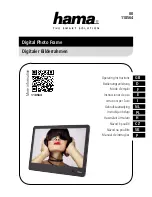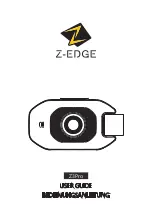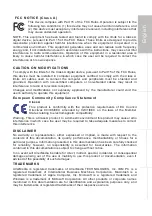
7.2 Restrictions
207
It’s a good idea to mark your cards with a large “L” and a large “R” respec-
tively.
After these common files are installed, it’s time to download the cam-
era and firmware-specific SDM core from
http://stereo.jpn.org/eng/sdm/
index.htm
. This download contains a single file,
DISKBOOT.BIN
. Copy this
file into the root directory of your memory card.
Now, remove the card from the card reader, switch on the write-protec-
tion, and insert the card into the camera. When you start the camera, you
should see the SDM splash screen.
7.2
Restrictions
We have already mentioned that the SDM is based on a lightweight CHDK
variant. Some CHDK functions have been removed. In many cases, these
functions are not really needed for photography. For example, the calendar
and the four games have been omitted from the SDM.
Unfortunately, there is also true photographic functionality that is
missing—and your only option is to go back to the CHDK if you require that
functionality. For example, the SDM has only limited RAW support. In par-
ticular, it cannot create DNG files (section 4.5.2). In-camera development of
RAW files is missing, too, and curves are not supported.
In regard to scripting, the SDM supports its own
uBasic
dialect (section
7.9). Because some CHDK
uBasic
commands are not supported by the SDM,
not every script can be ported to the SDM. Scripting with
Lua
is not sup-
ported at all.
7.3
Additional
functions
On the other hand, the SDM introduces so many useful functions that you
might want to switch to the SDM now and then. It might be a good idea to
keep two memory cards, with the CHDK on one and the SDM on the other.
In particular, the SDM improves
onion skinning
(overlaying two pictures)
by allowing overlays to be viewed as red/cyan
anaglyphs
. This is possible
both in color and black-and-white. Of course, this feature is designed for
stereo photography, but it can also be useful for controlling panorama or
bracketing series. Simply go to
Replay mode,
half-press the shutter button,
move to the next image with the
RIGHT
button, half-press the shutter
button again, and you will see both images either side-by-side or overlaid
as a red/cyan anaglyph, depending on your settings.
Time-lapsing
is also made easy with a single, powerful
uBasic
command
that allows you to create highly sophisticated time series. A script version
of that command is already contained in the deployment so it can be
Summary of Contents for Camera
Page 1: ......
Page 2: ...The Canon Camera Hackers Manual ...
Page 3: ......
Page 4: ...Berthold Daum The Canon Camera Hackers Manual Teach Your Camera New Tricks ...
Page 19: ...10 CH APTER 2 Cameras and Operating Systems ...
Page 25: ...16 CH APTER 3 ...
Page 85: ...76 CH APTER 4 Teach Your Camera New Tricks ...
Page 213: ...204 CH APTER 6 ...
Page 253: ...244 AP PENDIX ...
















































